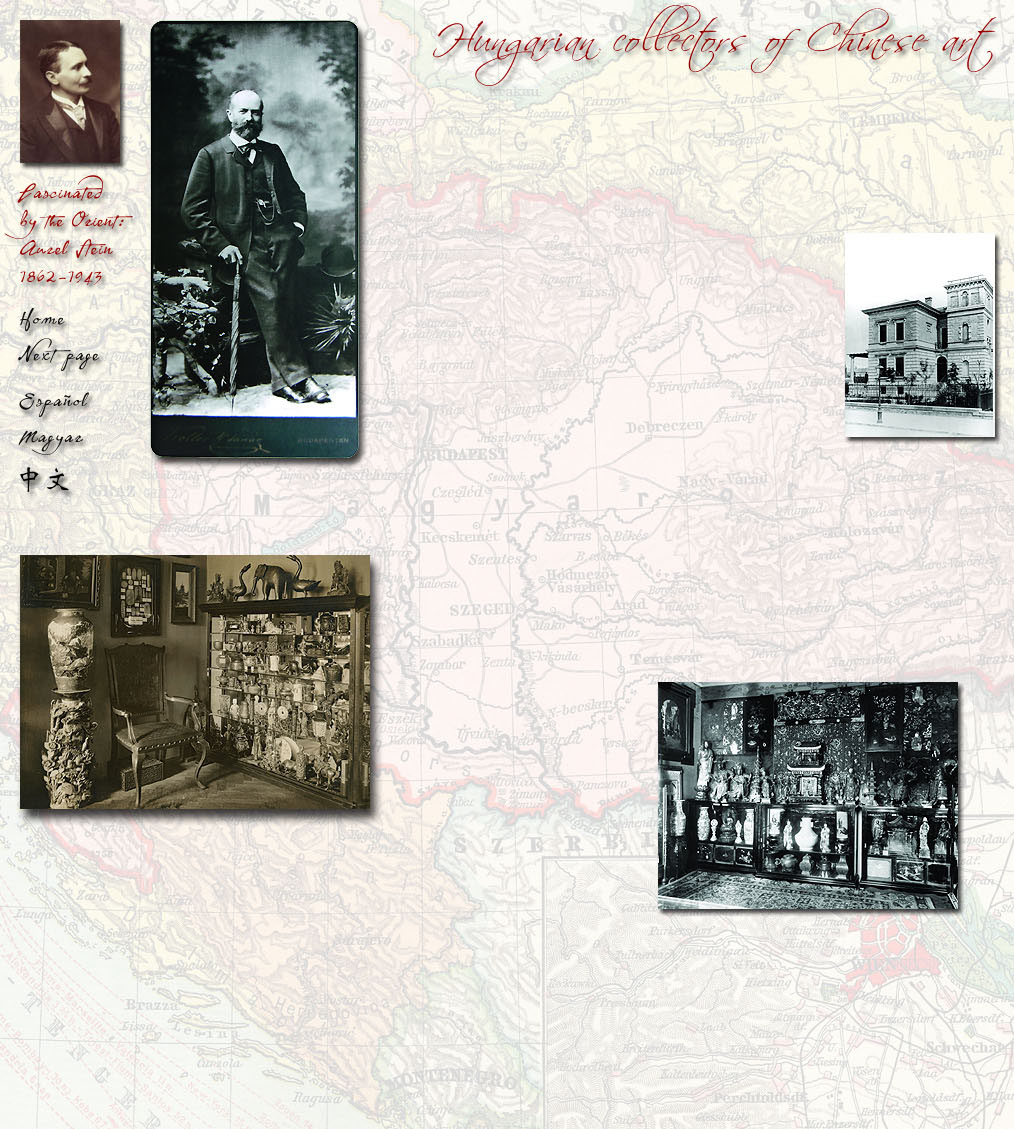 In
the second half of the 19th century, the collection of Chinese objects
was given a great impetus by scientific debates on the origin of the
Hungarian people. Metalwork and enameled objects were the focus of
attention, primarily because they could be compared with archaeological
material found in Hungary.
In
the second half of the 19th century, the collection of Chinese objects
was given a great impetus by scientific debates on the origin of the
Hungarian people. Metalwork and enameled objects were the focus of
attention, primarily because they could be compared with archaeological
material found in Hungary.
 The
Zichy family’s affection for Oriental objects was reflected in the
collections of Ödön Zichy (1811-1894). His son Jenő (1837-1906)
systematized and significantly enriched this collection with objects
collected on his three Asian expeditions and through acquisition that he
intended to develop into a museum collection. The short-lived Zichy
Museum, including the first Hungarian Oriental Museum, opened in
Budapest in 1901. Jenő Zichy’s Chinese collection comprised mainly
bronzes, including bronze mirrors, ge-halberds, bronze coins of
variegated shapes, metal fittings from the Ordos region and several late
replicas of ancient bronze ceremonial vessels.
The
Zichy family’s affection for Oriental objects was reflected in the
collections of Ödön Zichy (1811-1894). His son Jenő (1837-1906)
systematized and significantly enriched this collection with objects
collected on his three Asian expeditions and through acquisition that he
intended to develop into a museum collection. The short-lived Zichy
Museum, including the first Hungarian Oriental Museum, opened in
Budapest in 1901. Jenő Zichy’s Chinese collection comprised mainly
bronzes, including bronze mirrors, ge-halberds, bronze coins of
variegated shapes, metal fittings from the Ordos region and several late
replicas of ancient bronze ceremonial vessels.
Other independent collections of Oriental art were also created at the turn of the 19th and 20th centuries. Oriental artefacts dominated the collections of certain connoisseurs such as Ferenc Hopp (1833-1919) and Emil Delmár (1876-1959). The wealthy optician Ferenc Hopp travelled around the world five times, visiting China three times, and purchasing artefacts mostly from curio shops, which sold exquisite contemporary items of fine workmanship sought after by Western customers, including ceramics, lacquer, cloisonné, bronzes and furniture.
 After
World War I, in 1919 Ferenc Hopp donated his valuable collection of over
4,000 works of Far Eastern art to the Hungarian state. The collection
was housed in his villa in Budapest, which was converted into a museum
bearing his name. The finest examples in the Chinese collection of
Ference Hopp Museum of Far Eastern Art include sculptural works, Ming
and Qing ceramics, cloisonné, lacquer ware and later precious stone
carvings.
After
World War I, in 1919 Ferenc Hopp donated his valuable collection of over
4,000 works of Far Eastern art to the Hungarian state. The collection
was housed in his villa in Budapest, which was converted into a museum
bearing his name. The finest examples in the Chinese collection of
Ference Hopp Museum of Far Eastern Art include sculptural works, Ming
and Qing ceramics, cloisonné, lacquer ware and later precious stone
carvings.
